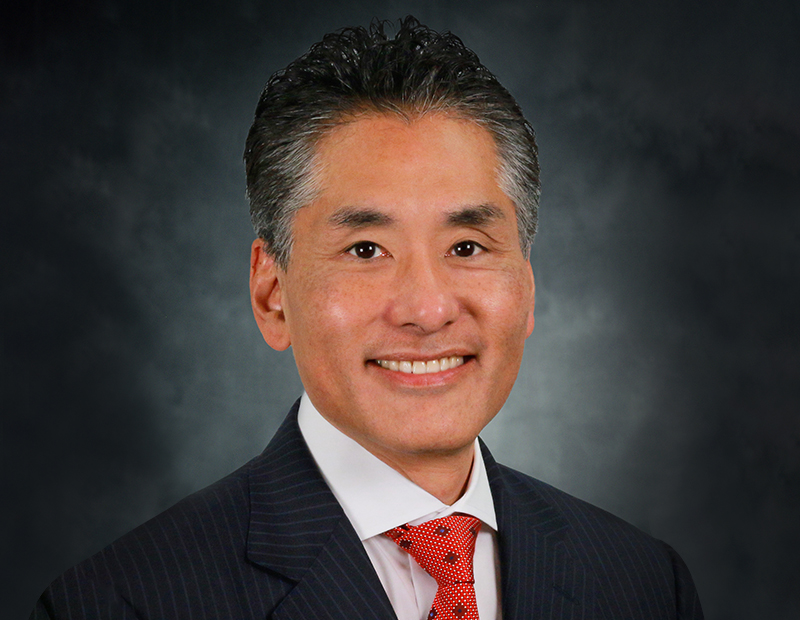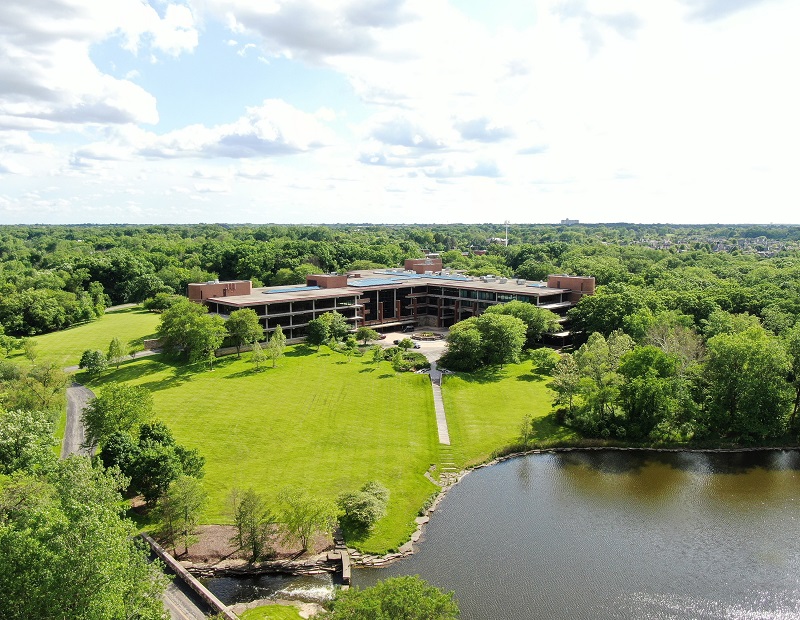Will Chicago’s Suburban Office Revival Continue?
With suburban office refinancing deals worth more than $1 billion in 2019, NAI Hiffman Senior Vice President Perry Higa is optimistic about the trend gaining more strength.
At the end of 2018, NAI Hiffman Executive Vice President Jason Wurtz predicted that the then-slowly rising trajectory of the suburban office market would maintain its direction in coming years due to increased interest from investors and strong leasing activity. In the interview below, Senior Vice President Perry Higa pointed out that he continues to believe in a revival of the metro’s suburban office, despite the “tale of two cities” type of activity. He also highlighted that in 2019 he saw more investment from private equity firms as well as more than $1 billion in refinancing deals, a sign that companies are seeing more long-term opportunities in the suburbs.
Tell us about office activity in Chicago’s suburban areas. Were there any surprising trends that you noticed?
Higa: We believe the Chicago suburban office is undergoing a revival, with Class A office leading the way, and is beginning to attract more local investor attention, which increasingly includes private equity and high-net-worth individuals, as opposed to REITs, insurance companies and other institutional investors in the past. John Paul DeJoria, who bought the McDonald’s corporate campus in the Chicago suburb of Oak Brook, Ill., last summer is just one example.
Recently, in the Chicago area, the spotlight has been on the city’s downtown Fulton Market and West Loop office submarkets. However, several investors are betting on the suburban Class A office market and spending money to renovate and add amenities.
In the final three months of 2019, the suburban Chicago office market saw a positive net absorption of 94,356 square feet, up from a negative 132,580 square feet in the third quarter. Class A buildings were largely responsible for the rebound, with a positive net absorption of 292,903 square feet in the fourth quarter. Strong suburban submarkets included the East-West Corridor, which saw several large transactions for Bosch, Edwards-Elmhurst Health, Aldi, Blue Cross Blue Shield and Elkay to name a few.
READ ALSO: A Deep Dive Into Chicago’s Hottest Office Submarket
Further north, Horizon Therapeutics confirmed it is finalizing a deal to buy Takeda’s Deerfield campus, which is a 70-acre campus that includes five buildings totaling 660,000 square feet. Paylocity moved its headquarters to the old Zurich Towers in Schaumburg and leased approximately 309,000 square feet.
Another trend we’ve noticed was the high number of refinancings of office properties in the Chicago suburbs. Owners refinanced nearly $1 billion last year, which we feel is a sign they are betting on the suburbs for the long term.
You represented John Paul DeJoria in acquiring the former McDonald’s office campus. Tell us a bit about how representative this transaction was for office activity in Oak Brook and the metro’s suburbs in general.
Higa: I think it’s indicative of the wave starting to move the other way—with opportunity in the suburbs, not just in Chicago’s central business district. In June 2019, I represented Mr. DeJoria in the acquisition of the former McDonald’s campus, consisting of approximately 700,000 square feet of commercial buildings on 80 acres, including the former McDonald’s headquarters, Hamburger University and the Hyatt Lodge. There are few iconic commercial campus properties throughout the U.S. and this is one of them.
Mr. DeJoria did not buy the campus for a quick return and sell. He is a generational buyer, which means his real estate strategy is to own the property, now called Oak Brook Reserve, for several generations. In fact, his team told the Village of Oak Brook they plan to own the property for 345 years. Oak Brook Reserve is zoned for an additional 700,000 square feet of commercial space.
Currently, they are working with the village on a master plan to reposition the three assets for the future in the best interests of the owner and community. The investment is solid with a bright future. I think this acquisition, along with investments from companies like GlenStar and others, lends credibility to the Chicago suburban office market.
How would you describe the profile of companies looking to relocate to the metro’s suburbs?
Higa: Chicago’s suburban office market is diverse and alive. Technology, health care, food, accounting and engineering are just some of the industries that have their headquarters or regional offices within the metro’s suburban office markets. In my opinion, companies in these industries choose the suburbs due to their clients/patients, labor pool, real estate taxes and quality of life. Also, corporate executives who live in Lake Forest, Highland Park, Oak Brook, Burr Ridge, Naperville etc. want to be close to their office and not make the commute to downtown Chicago.
Companies have been trying to attract more Millennials to their suburban offices. What does it take to succeed?
Higa: The oldest Millennials are now in their late 30s and they have arrived in the suburbs. In fact, Millennial households are increasingly moving to the suburbs as they get older and have kids. The reality is that multifamily investors/developers have built or will build new apartments along the Metra lines and close to the Metra train stations, offering downtown-style amenities but lower monthly rents to attract Millennials and Gen Z workers. Elmhurst, Downers Grove, Naperville and Rosemont are a few of the municipalities that have experienced tremendous commercial and/or residential growth over the last several years.
How do you think office leasing activity in Chicago’s suburbs will play out this year?
Higa: Class A office buildings that are well located with a full amenity package will continue to have high occupancy. “Well located” means near a Metra train station, easily accessible to the interstates and O’Hare or Midway airports, with nearby restaurants and an experienced labor pool. However, Class B or C buildings or older obsolete buildings like the old McDonald’s Plaza will be demolished for new mixed-use development or redeveloped for climate-controlled storage, medical office or some other highest and best use.
Tenants will continue to negotiate aggressive terms except in well-located, renovated Class A office buildings. If a tenant does not need to expand or downsize, then a renewal will be preferred in order to avoid relocation costs.
What are the investment submarkets to watch in 2020, in Chicago?
Higa: Investors will continue to review the western suburbs of Oak Brook and Naperville, the areas near O’Hare and the north suburban office markets, focusing on Class A and B office and medical office buildings (MOB) and, for investors with the right strategy and vision, finding opportunities to reposition or convert older office buildings.
I have seen tremendous growth from the health-care systems. For example, DuPage Medical continues to be very aggressive in buying or leasing buildings in the western and south suburbs. Advocate/Aurora, Amita, Edwards-Elmhurst, Northwestern Healthcare, Loyola Health System and smaller health systems like Silver Cross Hospital, Palos Health and Riverside Healthcare are expanding their services and building or leasing MOBs.
What’s your advice for suburban investors this year, as we’re preparing for an economic slowdown?
Higa: According to a Fortune poll from November 2019, two-thirds of Americans anticipate a 2020 recession. The presidential election, China, Iran and some other global or national events might impact our economy, but to date, I foresee a stable economy and office market in the Chicago metro area. I suspect that commercial real estate investors will continue to search for assets that meet their investment criteria even if some may be less active than in past years as they wait and see what macro forces affect the market.
I always emphasize to investors that they should focus on the needs of today’s office tenants, who like natural light, open space or glass offices and conference rooms, amenities like tenant lounges with Wi-Fi, some form of food service and a friendly office property manager. In my opinion, there are and will be opportunities for great investments, but you have to do your due diligence and select the right assets with the correct leasing strategy.
Tell us about your goals and strategy for the upcoming quarters.
Higa: I’ll continue to focus on my existing clients and prospects for NAI Hiffman. In addition, I will penetrate the downtown and suburban office markets for prospects that require a headquarters or regional or satellite offices. My medical and cannabis clients keep me busy with leases, land acquisition and development of MOBs throughout metro Chicago. Per my business pipeline, multi-market office/industrial/age-restricted and senior care clients will continue to take my services across the USA and internationally. Currently, I have requirements in Europe and Mexico.










You must be logged in to post a comment.